The Boeing 747’s link with space exploration has seen a modified 747SP used as an observatory for the SOFIA project and two 747-100s used as Space Shuttle Carrier Aircraft. Despite the recent failure of Virgin Orbit’s rocket mission from the UK, the event highlighted a further example of the 747’s association with space, as a converted 747 was used as an airborne launch platform for the LauncherOne rocket. The 747-400 used by Virgin Orbit, called Cosmic Girl, was formerly part of the Virgin Atlantic 747 fleet.
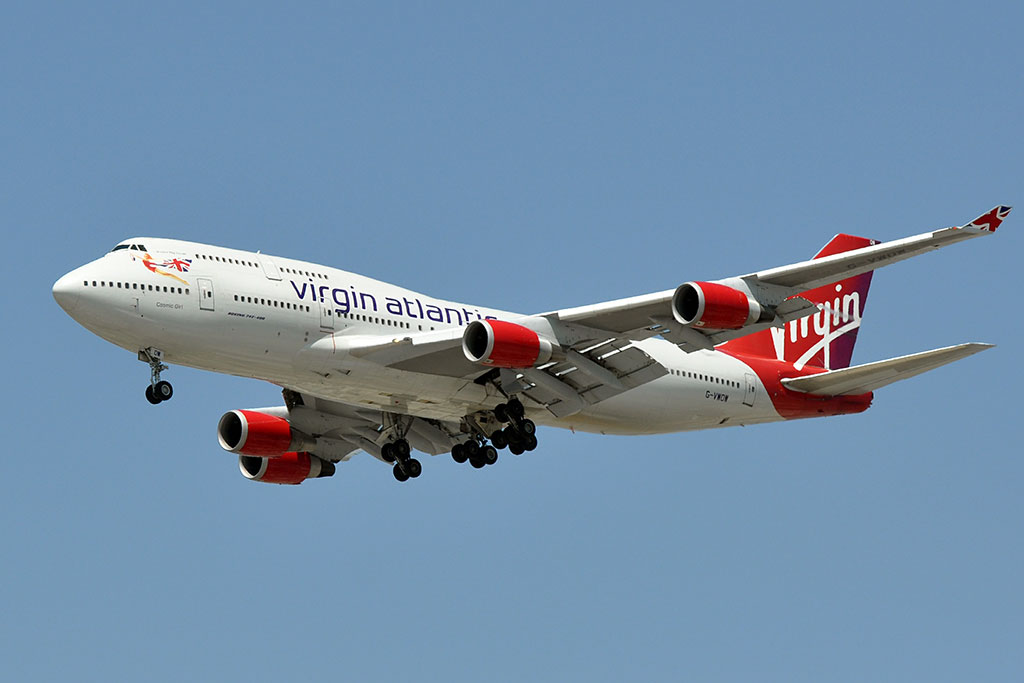
Cosmic Girl, G-VWOW, in her previous life operating for Virgin Atlantic. (Photo: Eric Salard, distributed under a CC BY-SA 2.0 Licence)
Cosmic Girl was built by Boeing in 2001 (c/n 32745) and her first flight took place on 29 September 2001. She was delivered on lease to Virgin Atlantic on 31 October 2001 and registered as G-VWOW. The aircraft was used by Virgin for 14 years, during which time she flew 8,265 flights and amassed a total of 66,430 flying hours. During her Virgin career, Cosmic Girl carried 2,506,175 customers and flew 1045 times between London Heathrow and New York.
Following her withdrawal from service with Virgin Atlantic on 23 October 2015, Cosmic Girl was purchased by the Virgin Group and flown to San Antonio, Texas, USA on 29 October 2015. She was acquired by Virgin Galactic with the potential to be used as a first stage launch platform for the airborne launch of a rocket called LauncherOne, and re-registered as N744VG. Cosmic Girl was initially stored for six months at San Antonio before being moved to TSTC Wasco Airport, Texas, where preparation of the aircraft for a rocket launching role began. In July 2017, Cosmic Girl was transferred to Virgin Orbit and ferried to the Mojave Air and Space Port, north of Los Angeles.
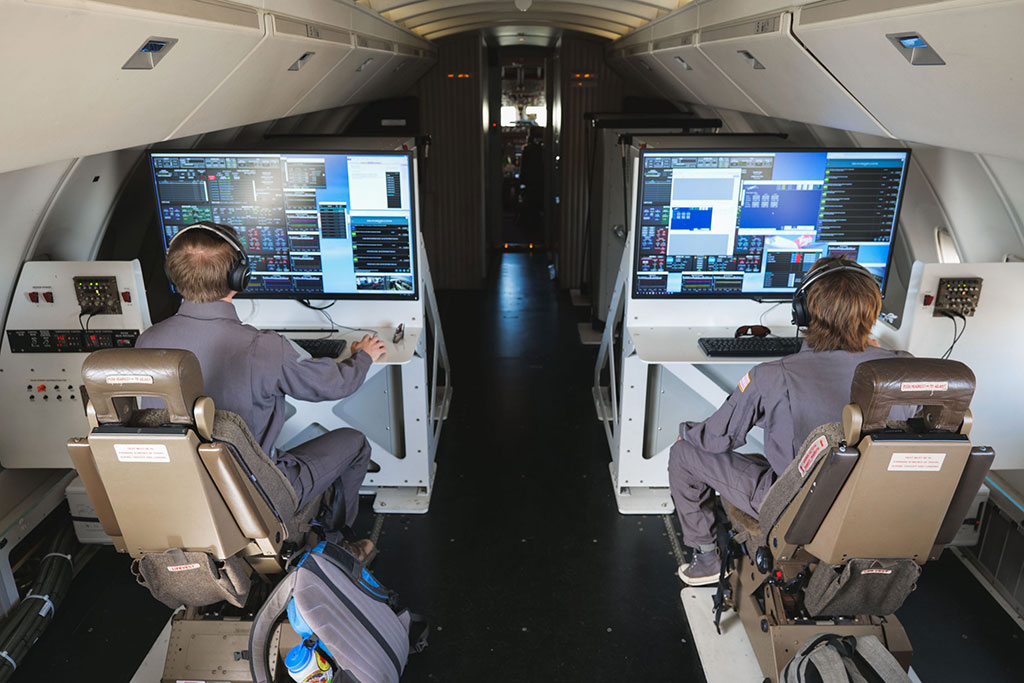
The launch engineer stations on the upper deck of Cosmic Girl (Photo: Virgin Orbit)
Modification of the aircraft involved removing all the cabin interior of the lower deck, creating a large empty open space and leading to an initial weight saving of around 23,000kg. The upper deck has become the mission control room, with the installation of two launch engineer stations. The cockpit is relatively unchanged apart from the addition of the launch release control system, a small unit mounted above the glare shield panel. The rocket launch pylon is attached to an inbuilt fifth engine mount on the underside of the left wing of the aircraft, between the fuselage and the left inboard engine. The fifth engine attachment point is part of the original design of the 747 and is used for transporting engines either for maintenance or to locations where a replacement engine is required.
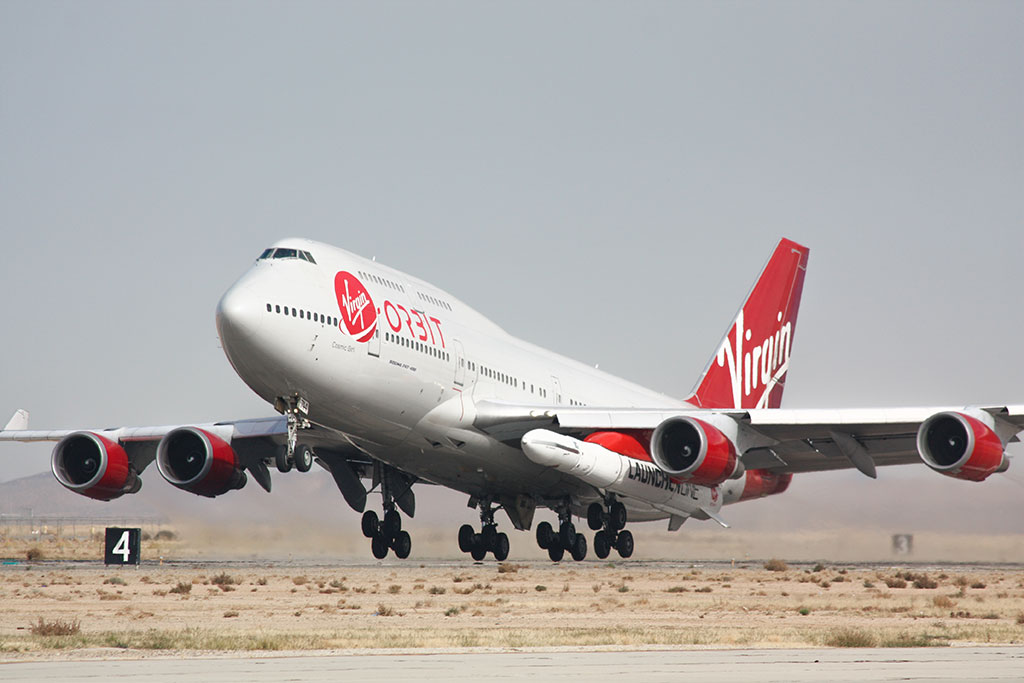
Cosmic Girl departing, for the first time, with a mated LauncherOne under the left wing, November 2018. (Photo: Virgin Orbit)
Cosmic Girl began taxi tests with a mated LauncherOne rocket in November 2018 followed by her first flight test on 18 November. The first drop test of a fully built inert LauncherOne rocket was undertaken in July 2019. After a lengthy testing period, the first flight of a LauncherOne rocket released from Cosmic Girl was on 25 May 2020. Unfortunately, it failed to reach space. The second launch demonstration on 17 January 2021 successfully deployed 10 CubeSats into a low Earth orbit for NASA. The operational debut of Virgin Orbit’s launch service was on 30 June 2021, and was followed by two successful missions until the recent problems of the launch from Spaceport Cornwall.
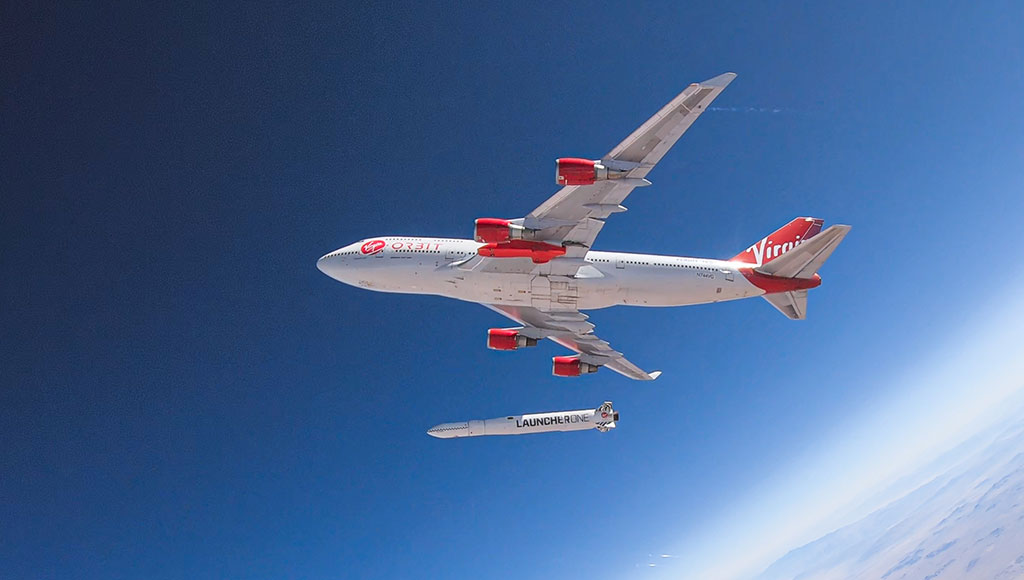
A LauncherOne rocket is released from Cosmic Girl during the aircraft’s first drop test in July 2019. (Photo: Virgin Orbit)
In order to launch the rocket, Cosmic Girl is flown up to an altitude of typically 35,000ft and, when ready, the aircraft is pitched up into a 32.5 degrees climb and LauncherOne is then released by the pilot. The pilot then rolls the wings of Cosmic Girl to the right to at least 45 degrees, banking away from the rocket. After five seconds of freefall, the rocket’s first stage engine ignites.
Cosmic Girl is based at the Mojave Air and Space Port, California from where all of the Virgin Orbit missions have been launched except for the most recent one from Spaceport Cornwall. She also spends time at Long Beach International Airport California, where Virgin Orbit’s rocket production and payload processing is carried out. In the future, it is planned to launch some missions from the former Shuttle Landing Facility at Kennedy Space Centre in Florida (low and medium inclination missions), Andersen Air Force Base in Guam (low-inclination missions) and Oita Airport, Kyushu, Japan.
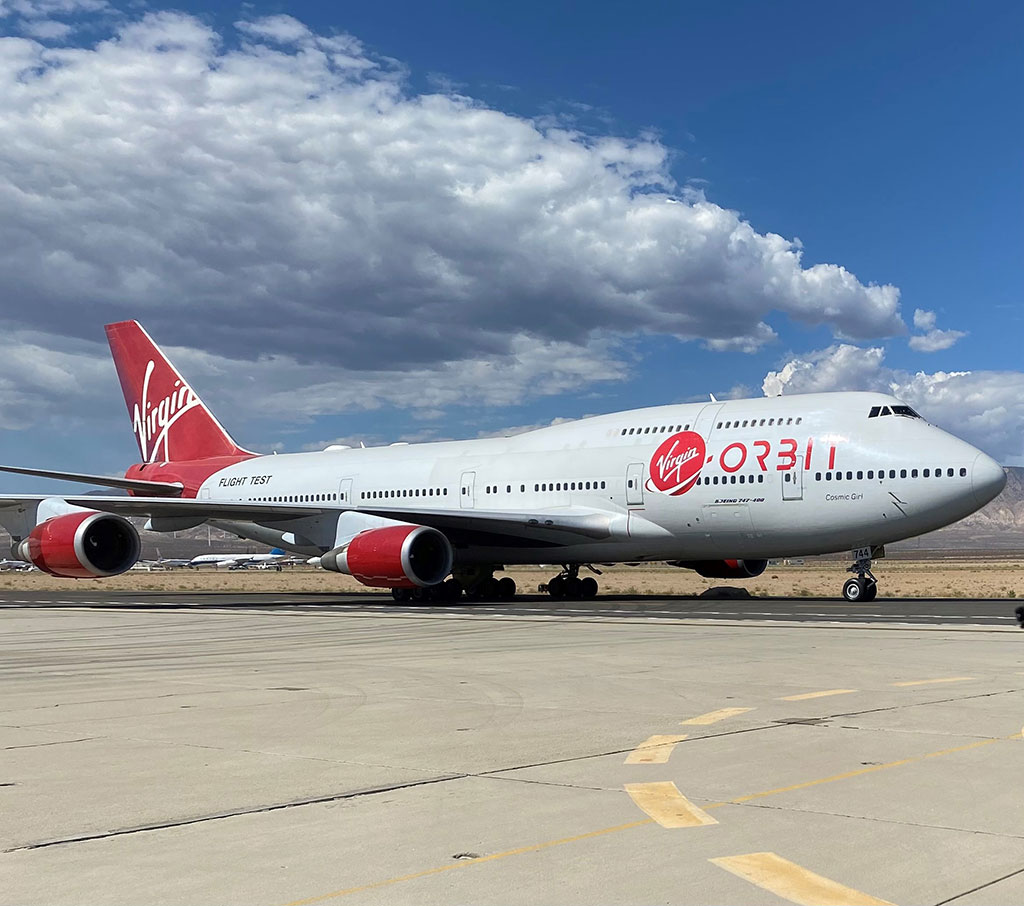
Boeing 747 N744VG, Cosmic Girl, taxiing for take-off (Photo: Virgin Orbit)
Following the unsuccessful mission on 9 January 2023, Cosmic Girl departed Spaceport Cornwall on 13 January and returned to Long Beach Airport. Virgin Orbit intends to return to Spaceport Cornwall for additional launches, possibly as early as later this year. Spaceport Cornwall is based at Cornwall Airport Newquay. For those who want to see Cosmic Girl when she returns to the UK, there are locations for spotting adjacent to the threshold of both runways 12 and 30 and from the West Car Park adjacent to the passenger terminal at the airport.





1 comment
On a scale of 1 to 10….how upset was Sir Richard with this launch failure !
I have photographed this 747 at LHR and MAN a few times in the past, you can never take too many 747 shots !